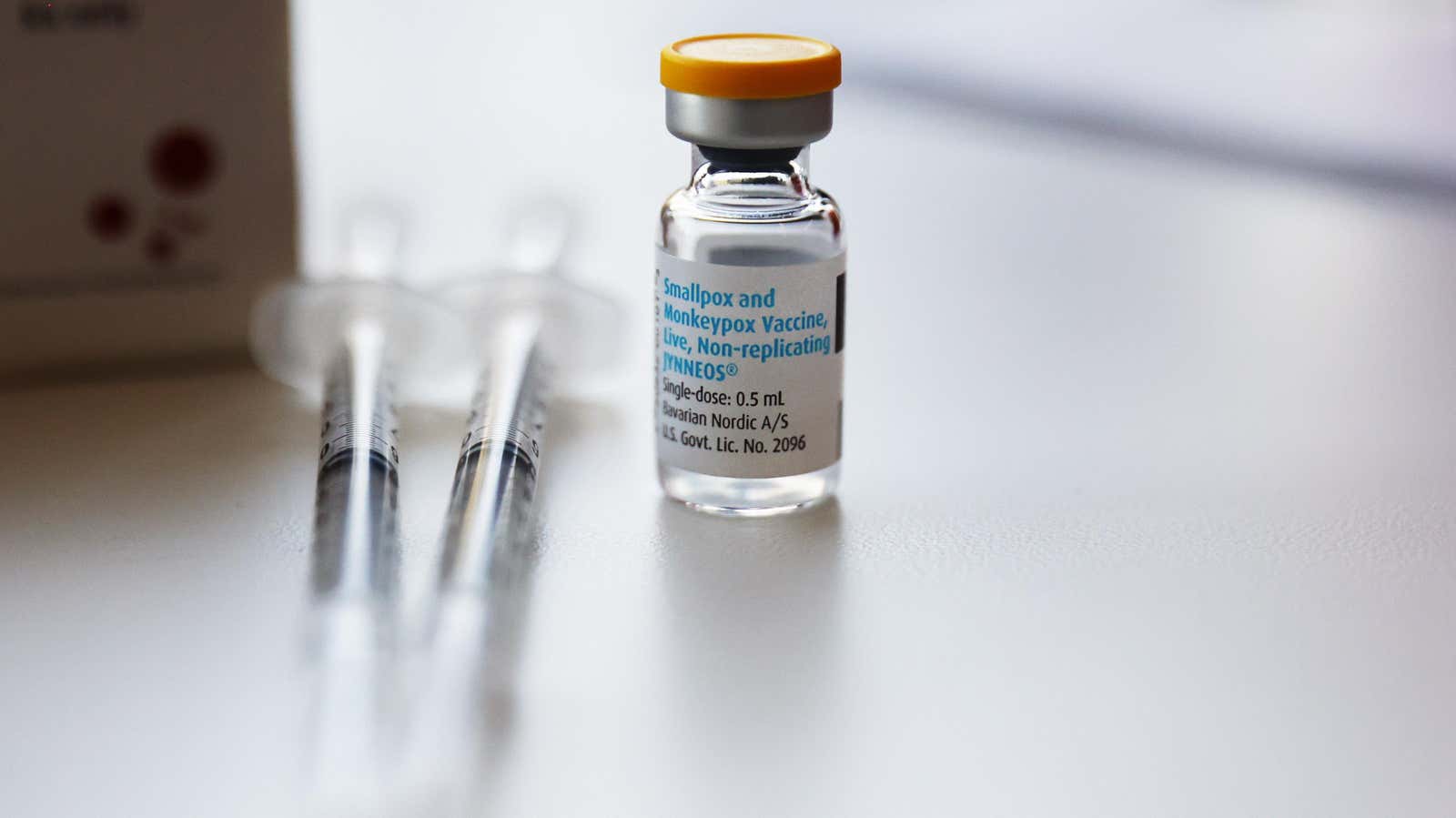Why Can’t I Get the Monkeypox Vaccine?

If you’re worried about COVID-19, it’s easy to make sure you’re up to date with your vaccine and boosters. If you are concerned about polio in New York , you should check if you received the polio vaccine as a child (if not, it’s not too late to catch up). But when it comes to monkeypox, vaccinations are not recommended for most people, and chances are, even if you seek a vaccine, you will be denied.
There are two types of monkeypox vaccine
The vaccine we call the monkeypox vaccine is branded as Jynneos and is the only vaccine officially approved by the FDA for monkeypox. Jynneos is administered as a subcutaneous (right under the skin) injection , ideally in two doses four weeks apart. It uses a live virus that cannot reproduce, has fewer side effects, and is considered safer than its predecessors. This vaccine is limited in supply.
Another vaccine is ACAM2000. The US has 100 million doses of vaccine in the national stockpile, so you might think it would be a natural choice to prepare the population for a monkeypox outbreak. Unfortunately, this is a very different vaccine and is not considered suitable for preventing monkeypox in most people – at least not yet.
Why don’t we use ACAM2000 to treat monkeypox?
While ACAM2000 can be used to prevent monkeypox (an emergency use authorization is available for this purpose), it is primarily a smallpox vaccine. That’s what it’s fully approved for, which is why the US is keeping it in case smallpox comes back naturally or as a bioweapon.
If you’ve ever seen an older person pointing at a smallpox inoculation scar (or if you’re one of those people yourself), you might know what I’m getting at. Vaccination with this type of smallpox vaccine requires pricking the skin with a forked needle until blood appears. Then you get a solitary lesion in that spot, similar to the ulcers that appear all over the body with a full blown smallpox infection. If the pustule does not develop within a week or so, you will need to go back and repeat the procedure. It is unpleasant and painful, but the protection against smallpox is worth it.
ACAM2000 has more frequent and potentially more serious side effects than the Jynneos vaccine. It should not be used in pregnant women, those who are immunocompromised, or those with certain skin conditions such as eczema. It also carries a 1 in 175 risk of myocarditis, or inflammation of the heart muscle. Due to all these caveats, it is not suitable for vaccine clinics, Vox reports , and can instead be prescribed at a doctor’s visit after careful consideration of the risks.
What if we had a smallpox epidemic? It would make perfect sense to deploy the ACAM2000 to as many people as can use it safely. The risk of smallpox will be greater than the risk of the vaccine. But smallpox is a much more serious disease than monkeypox, with a fatality rate of up to 30% . (The current strain of monkeypox has a mortality rate closer to 1%.) The risk/benefit discussion is quite different.
So far, public health officials have been making the judgment that it’s better to stick with a safer vaccine, even if we don’t have that much. This may change, but for now, Jynneos is the only vaccine recommended for people at risk of contracting monkeypox.
Why there is not enough Jynneos monkeypox vaccine
Compared to 100 million doses of ACAM2000, we only have a few hundred thousand doses of Jynneos available (including those already in) and there will be more soon, but this may not be enough. The Washington Post reports that 1.6 million men are considered at high risk for monkeypox, so 3.2 million doses are required (because it is a two-dose vaccine), but there is only enough vaccine in the US to immunize one-third of them.
There are problems with the production and distribution of the vaccine from its manufacturer in Denmark, which, in addition to us, must supply many countries. (If you want to delve into the history of these supply issues, here’s a New York Times article about how we couldn’t replace 20 million doses of expired stock, and here’s another story about how the 300,000 doses that we were already stuck overseas due to US government blunders when the outbreak began to spread.)
Due to limited supplies, vaccines are being distributed to people who are most at risk of contracting monkeypox. People who know they have been exposed to the virus are at the top of the list; if you receive the vaccine in the first few days, your immune system will be able to fight the disease before you become seriously ill. Close contacts of people with monkeypox, and sometimes their close contacts, are also likely to be offered the vaccine in a strategy called ring vaccination . In some countries, anyone in a high-risk group is eligible to be vaccinated.
The exact rules for who is offered the vaccine will vary from place to place. If you think you fall into one of the above categories, ask your local or state health department about how to get on the monkeypox vaccine queue.